We're now at the end of our 2014 review wrap-up which deals with the largest group of vehicles I dealt with this past year: Crossovers.
Next: Dodge Journey Crossroad
Let us go back to the most recent dark age of Chrysler. During the floundering years of DiamlerChrysler to Cerberus ownership, Chrysler produced some of the worst vehicles to ever appear. Models such as the Chrysler Sebring, Dodge Avenger, Caliber, Jeep Compass, and Patriot left a bad taste in buyer’s mouths and would be one of the factors that would lead the company into bankruptcy. But after going through bankruptcy and being under the guidance of Fiat, Chrysler would rise from the ashes. One of the first things Fiat did for the company was to infuse the company with some much needed funds to give some of their vehicles much needed changes. One of those vehicles was the Dodge Journey, a small five to seven seat crossover that received mixed reviews when introduced back in 2007. With the changes that Chrysler and Fiat bestowed on the Journey, is it one that you should consider?
The basic shape of the Journey hasn’t really changed much since it was first introduced back in 2007, which unfortunately means that it looks like other crossovers in the marketplace. The Crossroad trim adds some ruggedness to the Journey with dark grille inserts and surrounds, off-road inspired front and rear fascias, 19-inch wheels in a dark finish, and black headlight housings. Inside is where some of the major changes happened as Dodge ripped out the old interior layout and materials and replaced it with a new dashboard with a better control layout and better materials. The excellent UConnect infotainment system with an 8.4 inch screen was in my tester and it still remains very easy to use. Seats are leather with "sport mesh" inserts which were kind of odd feeling, but providing a nice level of comfort. My Journey was a five-seater version which I think is the best way to configure the Journey as there is enough space for passengers and cargo. Jumping to seven-seat model means cramped space for passengers in the third row and barely any cargo space.The Journey has a choice of two different engines. The base is a 2.4L four-cylinder, while my tester came with the optional Pentastar 3.6L V6. The V6 produces 283 horsepower and 260 pound-feet of torque. This is paired to a six-speed automatic and optional all-wheel drive system. The V6 is more than capable of moving the 4,238 pound as power is very abundant throughout the rev range. The six-speed automatic showed no signs of confusions when going through the gears, although on my tester, downshifts seemed to a take a second or two longer. One downside to the V6 is fuel economy. The EPA rates the Journey V6 with AWD at 16 City/24 Highway/19 Combined. My week of driving returned an average of 18. Not bad, but not good when compared to such competitors as the Kia Sorento and Toyota Highlander.
The Journey’s ride is mostly composed over smooth and somewhat rutted roads. On rougher surfaces, the suspension has its work cut out and some road jostles do make their way into the cabin. Cornering is what you expect in a crossover, a bit of lean and body roll. Steering feels somewhat rubbery, but provides some decent feel.The changes Chrysler and Fiat did to the Journey did give it a new lease on life. However, the Journey doesn’t really have anything that sets it apart except price. A base Journey will $20,295, while my somewhat optioned Journey Crossroads hits the road $31,380. If price your main concern, then give the Journey a look. Otherwise, you might be better off with another crossover.
Disclaimer: Dodge Provided the Journey Crossroad, Insurance, and One Tank of Gas
Year: 2014
Make: Dodge
Model: Journey
Trim: Crossroad AWD
Engine: 3.6L Pentastar V6
Driveline: Six-Speed Automatic, All-Wheel Drive
Horsepower @ RPM: 283 @ 6,350
Torque @ RPM: 260 @ 4,400
Fuel Economy: City/Highway/Combined - 16/24/19
Curb Weight: 4,238 lbs
Location of Manufacture: Toluca, Mexico
Base Price: $28,395
As Tested Price: $31,380 (Includes $995.00 Destination Charge)
Options:
Navigation and Sound Group I - $995.00
Popular Equipment Group - $995.00
Next: Hyundai Santa Fe Sport 2.0T
When I reviewed the Hyundai Sonata Fe Sport back in 2013, I said that it was a mostly competent crossover. The only downside was the base 2.4L four-cylinder as it felt that was under a lot of stress to get the vehicle moving. I said that 2.4 would be ok for most buyers if you decided to get the Santa Fe Sport with front-wheel drive. But if you were to go for all-wheel drive, the optional 2.0T would be a better choice. But is it? Well I had some time in a Santa Fe Sport 2.0T to find out if my original opinion was right.
The turbocharged 2.0L four-cylinder in the Santa Fe Sport produces 264 horsepower and 269 pound-feet torque. This comes paired up to a six-speed automatic with the choice of either front or all-wheel drive. In my tester, I had the front-wheel drive version. Compared to the somewhat out-of-breath 2.4, the 2.0T seems like the perfect match for the Santa Fe Sport. With the turbo spooled up, the Santa Fe Sport moves with authority. With torque arriving at 1,750 rpm, the Santa Fe Sport gets out of its own way and feels like power is always available. Even though this is a four-cylinder, Hyundai has done a lot of work in refinement to make it feel more like a V6. There’s barely a hint of buzzing or racket that is common to four-cylinders. As for fuel economy, the EPA rates the Santa Fe Sport 2.0T FWD at 19 City/27 Highway/22 Combined. My average for the week landed around 23.1 MPG.Aside from the different engine, the Santa Fe Sport 2.0T is very much the same as the model I drove back in 2013. The styling is very distinctive for the class and equipment is very generous with such features as dual-zone climate control, heated leather seats, and sun shades for the rear windows. Making this even sweeter is a base price $30,650 which for what you get makes it quite a steal for the class.
So if you were considering getting a Santa Fe Sport, you might want to consider the 2.0T. It makes a good crossover into an impressive one.
Disclaimer: Hyundai Provided the Santa Fe Sport 2.0T, Insurance, and One Tank of Gas
Year: 2014
Make: Hyundai
Model: Santa Fe Sport
Trim: 2.0T
Engine: 2.0L Turbo GDI DOHC 16-valve Four-Cylinder
Driveline: Six-Speed Automatic, Front-Wheel Drive
Horsepower @ RPM: 264 @ 6,000
Torque @ RPM: 269 @ 1,750 - 3,000
Fuel Economy: City/Highway/Combined - 19/27/22
Curb Weight: 3,569 lbs
Location of Manufacture: West Point, GA
Base Price: $30,650
As Tested Price: $33,385 (Includes $875.00 Destination Charge)
Options:
Navigation Package - $1,750.00
Carpeted Floor Mats - $110.00
Next: Volkswagen Tiguan SEL
Within the past few years, the compact crossover market has been booming. It seems every year that a new automaker joins the group with their interpretation of a compact crossover. But what about the old guard? How do they stack up? Well I spent some time in one of them, the Volkswagen Tiguan to find out.
Looking at the Volkswagen Tiguan, you can’t help but think its a smaller Touareg. The overall profile and shape make you think the Volkswagen just left their larger crossover in the wash a bit too long. Up front is Volkswagen’s two slim bar grille with large headlights and a strand of LEDs. Along the side is a lot of glass area to make the interior feel more spacious, along with body cladding and a set of eighteen-inch wheels. The back features flared haunches and a set of large taillights.Inside is a mixed bag. Let’s begin with the good points. Controls for the standard infotainment system is in easy reach for the driver and passenger. Seats came wrapped in a beige leatherette which felt fine and provided good support. Back seat space is excellent with an abundance of head and legroom. Now onto the bad points. To start, material quality is somewhat disappointing. There is some spots of soft touch material, but the majority of the interior is made up of hard plastics. This would be fine if this was a crossover around the high $20,000 mark, not one that costs $35,490. Then there is the standard infotainment system on the SEL. This is the small screen system Volkswagen uses on many of their vehicles and comes with a litany of problems. To start is the graphic interface looks it has come from the early to mid-2000s which also means the touch points are very small, making them somewhat hard to hit. Also the small screen makes it hard to look at glance, meaning you have to take your eyes off the road for a few seconds longer than looking at larger screen. Then there is the rear cargo space which measures out to 23.8 cubic feet, which makes it the smallest in the small crossover class.
Powering all Tiguans is Volkswagen’s well known turbocharged 2.0L four-cylinder with 200 horsepower and 207 pound-feet. This is paired to a six-speed automatic and optional 4Motion all-wheel drive system. The turbo 2.0L gives the Tiguan some scoot with torque coming in 1700 rpm and it never feels that it will run out of power the higher you climb in the rev range. Plus the turbo-four is very refined with no hint the buzz that is common in four cylinders. The six-speed automatic makes the most of the power and delivers quick shifts. Fuel economy is somewhat of a disappointment with ratings of 20 City/26 Highway/23 Combined. I got around 22.4 MPG during my week.
Some reviewers have called the Tiguan’s handling GTI-like. I thought that was a bit dubious, but I have to admit that is the best way to describe it. The suspension limits the amount of body roll, while the tires and 4Motion all-wheel drive kept the Tiguan glued to the road. Steering has good feel and weight to it. On the day to day front, the Tiguan does ok with minimizing road imperfections and bumps. It likely helps that my Tiguan was equipped with the 18-inch wheels and not the optional 19-inch wheels which make the ride unbearable.The Volkswagen Tiguan is a bit of a mixed bag. On one hand, it has some good looks and impressive handling characteristics. On the other hand, there is a number of problems with the interior, fuel economy is a bit meh, and the price tag of $35,490 is a bit too much. You’ll be better off with looking at a Mazda CX-5 or a Subaru Forester.
Disclaimer: Volkswagen Provided the Tiguan SEL, Insurance, and One Tank of Gas
Year: 2014
Make: Volkswagen
Model: Tiguan
Trim: SEL 4Motion
Engine: 2.0L TSI Turbocharged Four-Cylinder
Driveline: Six-Speed Automatic, All-Wheel Drive
Horsepower @ RPM: 200 @ 5100
Torque @ RPM: 207 @ 1700
Fuel Economy: City/Highway/Combined - 20/26/23
Curb Weight: 3,591 lbs
Location of Manufacture: Wolfsburg, Germany
Base Price: $34,625
As Tested Price: $35,490 (Includes $865.00 Destination Charge)
Options:
N/A
Next: 2015 Kia Sorento SX AWD
The current Kia Sorento is one of my favorite crossovers on sale as it has a nice equation of standard equipment and improvements, with similar pricing to the older model. One downside to the Sorento I drove last year was the price tag. With an as-tested price of $41,600 for the SX Limited I drove, I felt it was bit much for what you got, especially considering you could get mostly everything in the SX model for about $2,000 less. So when a 2014 Kia Sorento SX AWD arrived for weeklong test, it was time to see if I could stand on that opinion.
Now compared to the Sorento SX Limited I drove back last year, the SX really doesn’t have any differences on the exterior when compared to SX Limited aside from wheel finish. The SX came with nineteen-inch alloy wheels, while the Limited gets a chrome finish. Inside there are only few minor differences between the two trim levels such the SX Limited getting Napa leather and premium black trim. Otherwise there isn’t any real difference between the two trims as they both have heated and cooled seats, Kia’s UVO infotainment system, push-button start, and sunroof. So unless you really want Napa leather and chrome wheels, the SX seems like the better buy.Now not much has changed under the Sorento since we last reviewed it. The standard 3.3L GDI V6 still makes 290 horsepower and 252 pound-feet of torque, and comes paired with a six-speed automatic and optional all-wheel drive. Like I said in my review of the Sorento SX Limited, the V6 is quite punchy and has no problem of getting the vehicle up to speed. Fuel economy is rated at 18 City/24 Highway/20 Combined. I saw an average of 21.3 MPG. The Sorento’s ride still retains its comfortable characteristics of isolating bumps and imperfections.
So after spending a week in the Sorento SX, I would stand by my opinion of going with this model than the Sorento SX Limited. It just makes more sense as it does cents.
Disclaimer: Kia Provided the Sorento SX, Insurance, and One Tank of Gas
Year: 2015
Make: Kia
Model: Sorento
Trim: SX AWD
Engine: 3.3L GDI V6
Driveline: Six-Speed Automatic, All-Wheel Drive
Horsepower @ RPM: 290 @ 6,400
Torque @ RPM: 252 @ 5,200
Fuel Economy: City/Highway/Combined -18/24/20
Curb Weight: 3,894 lbs
Location of Manufacture: West Point, Georgia
Base Price: $38,300
As Tested Price: $39,195 (Includes $895.00 Destination Charge)
Options:
N/A
Next: Toyota Highlander Limited Platinum
In the talk of the seven-seat crossovers, we tend to mention the likes of the Chevrolet Traverse and its ilk; the Ford Explorer, Dodge Durango, and Honda Pilot. But there some models that deserve a spot in the light. Case in point is the redesigned Toyota Highlander.
The Highlander retains the boxy silhouette that has been a part of the vehicle for the past two-generations. But Toyota has given the Highlander a bit more of of muscular attitude to fit it more in line with Toyota’s SUV lineup. The new model has wider haunches, a more imposing trapazodial grille, larger head and taillights, and five spoke wheels. Moving inside, the Highlander has gone under a massive change. Higher quality materials and new dash layout help make the Highlander feel more premium.The dash layout now features a shelf sitting underneath the climate control and passenger side airbag to provide a spot for your phone or any small product. My particular Highlander comes equipped with seating for seven, though you can get seating for eight. Second row passengers get an impressive amount of head and legroom, however the flip-up cupholder on the passenger side seat is a bit flimsy and I worry it could break. Third-row passengers get decent headroom, but legroom is non-existent.Power comes from Toyota’s 3.5L V6 with 270 horsepower and 248 pound-feet of torque. This is paired up to a six-speed automatic and optional all-wheel drive system. This is the powertrain I would go for instead of the base 2.7L four-cylinder as its up to the duty of moving the portly Highlander (can get up to 4,500 lbs). The V6 has enough grunt to get the Highlander moving and keep up with the flow of traffic. Engine refinement is tops with barely any noise or harshness coming from the V6. The transmission is smart enough to keep the engine in the area of power and provides smooth shifts. As for fuel economy, Toyota says the Highlander V6 AWD gets 18 City/24 Highway/20 Combined. During my week, I saw an average of 21.1 MPG.
Toyota must have borrowed some of Lexus’ ride engineers to work on the new Highlander because it rides like a Lexus. Driving on some of the roughest roads in Detroit, the Highlander’s suspension was able to cope and provide a very smooth ride. There has also been work done on noise isolation to make road and wind noise almost non-existent.My Highlander Limited Platinum rolled up with an as tested price of $46,156, making it one of the more expensive choices in the crossover arena. But with all of the changes and improvements, I think the Highlander can justify the price. If you are considering a seven-seat crossover, the Highlander deserves a space at the top of the list.
Disclaimer: Toyota Provided the Highlander, Insurance, and One Tank of Gas
Year: 2014
Make: Toyota
Model: Highlander
Trim: Limited Platinum
Engine: 3.5L DOHC Dual VVT-i V6
Driveline: Six-Speed Automatic, All-Wheel Drive
Horsepower @ RPM: 270 @ 6,200
Torque @ RPM: 248 @ 4,700
Fuel Economy: City/Highway/Combined - 18/24/20
Curb Weight: 4,508 lbs
Location of Manufacture: Princeton, IN
Base Price: $43,590
As Tested Price: $46,156 (Includes $860.00 Destination Charge)
Options:
Tow Hitch w/Wiring Harness - $699.00
Remote Start - $499.00
Glass Breakage Sensor - $299.00
Body Side Molding - $209.00



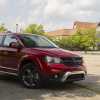
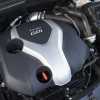
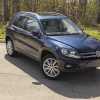
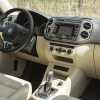
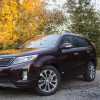
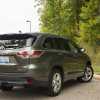
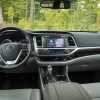

-3707742431.jpg.06edf8e14f4ccf35c60d4774a543cc11.jpg)



Recommended Comments
There are no comments to display.
Join the conversation
You can post now and register later. If you have an account, sign in now to post with your account.
Note: Your post will require moderator approval before it will be visible.